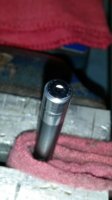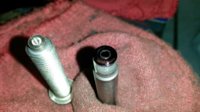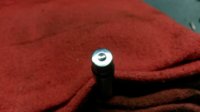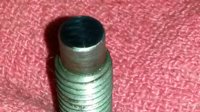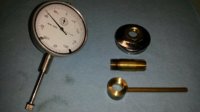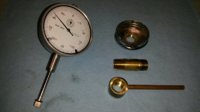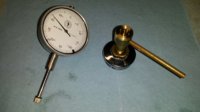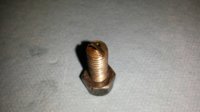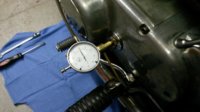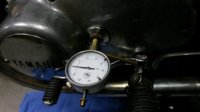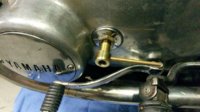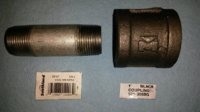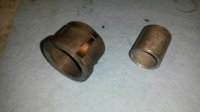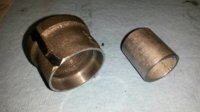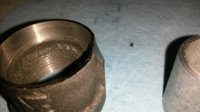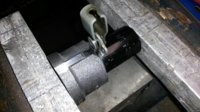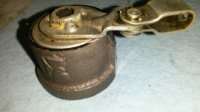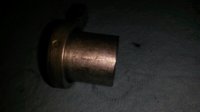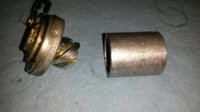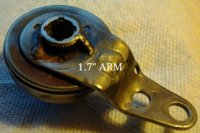Summary of the mods to date:
All tests were done with a 16 year-old cable, configurations #2, #3, and #4 using an old worm working in a worn/cracked worm housing.
Actuator was adjusted to 1/8 turn from fully seated. Excluding slack, this gives 0.60" of potential cable travel.
Lever pull tests were done at the lever end, 6" from the lever pivot, with force measurement taken at mid-travel. The clutch lever pivot to cable end distance is 1", giving a 6:1 leverage to the cable from this measurement point.
Actuator plunge measurements were taken with a depth guage on the side cover housing and worm outer edge.
Configuration #1 - Stock XS1 worm, 1.3" clevis hole distance
Configuration #2 - Arm bent down 0.4", 1.3" clevis hole distance
Configuration #3 - Arm bent down 0.5", 1.7" clevis hole distance
Configuration #4 - Same as configuration #3, modified cable/elbow entry angle
#1: Pull-test = 26 lbs, Actuator travel = 0.065", Cable tension = 156 lbs
#2: Pull-test = 18 lbs, Actuator travel = 0.070", Cable tension = 108 lbs
#3: Pull-test = 15 lbs, Actuator travel = 0.055", Cable tension = 90 lbs
#4: Pull-test = 14 lbs, Actuator travel = 0.057", Cable tension = 84 lbs
The clutch worm actually has a 32mm pitch, moving 1.26" per turn, about .0035" (0.09mm) per degree of rotation.
The force required to compress the clutch pushrod to mid-travel was 370 lbs.
This would require (in an ideal frictionless environment) 77 inch-lbs of torque on the clutch worm.
The actual torque required to rotate just the clutch worm, at mid-travel, measured at 86 inch-lbs, about 7 ft-lbs.
This is only about 12% over frictionless, so the clutch worm intrinsic friction is quite low.
With an ideal frictionless clutch cable:
86 inch-lbs torque, on a 1.3" lever arm, would require a cable tension of 66 lbs, 11 lbs at clutch lever end.
86 inch-lbs torque, on a 1.7" lever arm, would require a cable tension of 51 lbs, 8.5 lbs at clutch lever end.
The excessive cable tension is the 'overhead' of the contraption, and is:
#1: 156 lbs - 66 lbs = 90 lbs overhead, 58% of total force
#2: 108 lbs - 66 lbs = 42 lbs overhead, 39% of total force
#3: 90 lbs - 51 lbs = 39 lbs overhead, 43% of total force
#4: 84 lbs - 51 lbs = 33 lbs overhead, 39% of total force
It appears that cable friction accounts for about 39-43% of total force. I'm sure this also contributes to reduced travel.
Future tests are planned using the second modified worm (with the welded arm), the other new/unused clutch cables, an EZ-pull cable, and the new, black, harder composition worm body available from MikesXS.
Right now, I'm very pleased with this new clutch action. The clutch starts to engage when the lever is let out about 2/3rds from the grip, and is a softer engagement. I can work it with just one finger, but that's just bragging and has no real meaning...




